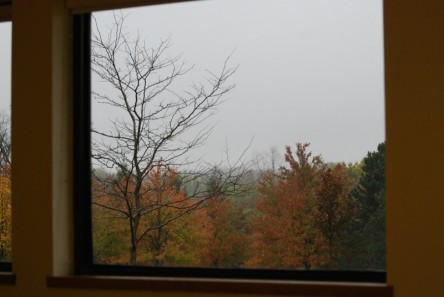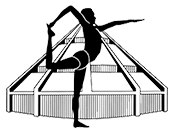Be in Adho Mukha Virasana (child’s pose), supported well with your head and buttocks on the same level, rest your hands next to your hips. Let yourself go.
“All movement is derived from and returns to stillness. The quiet breathing body folded over itself in a forward bend is an expression of both stillness and movement. When we look deeply into stillness, we find subtle movement, and as we find more and more grace in the movements of body and mind, we begin to see how they are expressions of stillness. Don’t think stillness and movement are complementary opposites. When we relax into time, when mind and body are synchronized with breathing, there is action with nobody coming or going and the self-created shackles drop away. The quiet mind becomes the marvelous dynamism of the universe, and just like tress expressing themselves in each season, we become who we truly are, and we are home.”
– -Michael Stone, Yoga for a World Out of Balance, p.151
Sutra II.46
Sthira sukam asanam
Asana is perfect firmness of body, steadiness of intelligence and benevolence of spirit.
The definition of asana is given as follows: whatever asana is performed, it should be done with a feeling of firmness, steadiness and endurance in the body: goodwill in the intelligence of the head, and awareness and delight in the intelligence of the heart. This is how each asana should be understood, practiced and experienced. Performance of the asana should be nourishing and illuminative.
– – – B.K.S Iyengar, Light On The Yoga Sutras of Patanjali, p. 157
It is good to remember as we struggle with our poses that at some point we are looking for the stillness that Michael Stone refers to, to this “perfect firmness of body and steadiness of intelligence”. Often the way to find it is through the benevolence of spirit. Determination helps but so does the spirit of good will and benevolence and with humor and toleration. Last week I quoted Mr Iyengar speaking about how we are so likely to overdo and under do, and the experience of discomfort and the struggle to understand and correct and fix and get better. So often all that struggle overtakes our practice and we forget to look for the stillness and the steadiness. At some point in the progress of each pose it is important to find that, even if it is only for a brief moment. As I struggle with the ongoing challenges of middle age I find the joy of my practice coming, not with the accomplishment of deeper back bends, nor more complicated poses, but with longer holds of the less rigorous poses and the deeper understanding I get while there. Time takes on a different meaning, and the way poses interact with each other also changes. On the days when none of the usual poses or modifications seem to work on my ‘issues’ I find it easy to get irritated and short with myself and what seem like my short comings. I have to make a conscious effort to stop and do something that steadies me, literally, so that I can go back to my practice and look again at what I am doing to find new ways to approach the same pose in order to find something that is steadfast as well as a delight. Its not always very easy. Sometimes I have to move on and let that pose go for the day. But always there is something that will work. Slowly over time I change. I guess it is a little like the trees in the seasons, no two alike even though there is a repetitive rhythm to the four cycles.


Leave a Reply